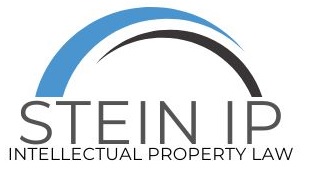docketing@steinip.com
- HOME
- > Blog Main Page
- > News
- > What Inventors Should Know About The Administration’s Valuation-Based Patent Fee Proposal
What Inventors Should Know About The Administration’s Valuation-Based Patent Fee Proposal
By Cassadee Wellings
The Administration has proposed replacing the current flat-fee system for maintaining patents with a valuation-based fee model. Under this approach, the United States Patent and Trademark Office (USPTO) could charge between one and five percent of the assessed value of each patent annually for maintenance, rather than relying on fixed fees. [1]
The proposal has drawn strong opposition from a coalition led by the U.S. Chamber of Commerce, which recently submitted a letter to the House and Senate Judiciary Committees urging the Commerce Department to withdraw the plan. [3] 
The coalition’s letter argues that valuation-based patent fees would be arbitrary, unpredictable, and potentially unlawful. Critics emphasize that valuation is inherently speculative. Determining the contribution of a single patent to a product’s commercial success is often impossible, as value often depends on shifting market trends.
IPWatchdog Founder and CEO Gene Quinn has also noted that the USPTO has no experience with valuation-based frameworks, making implementation highly uncertain. [1] These concerns, coupled with questions about the agency’s statutory authority, have fueled significant debate among stakeholders.
According to the coalition, the USPTO lacks the statutory authority to impose such fees. [1] Section 10 of the Leahy-Smith America Invents Act limits the USPTO’s authority to recover the aggregated costs of its operations, not to generate revenue based on the economic value of individual patents. [2] On that reading, a valuation-based model would exceed the USPTO’s congressional mandate. [1]
Opponents further warn that the burden of these fees would fall most heavily on those least able to bear it. Large corporations with diversified portfolios may absorb higher maintenance costs, but startups, universities, and individual inventors would face unpredictable and potentially prohibitive annual expenses. The coalition letter cautions that such costs could force smaller entities to abandon valuable patents, eroding the innovation ecosystem the patent system was designed to support. [3]
Beyond fairness concerns, the coalition stresses that valuation-based fees could undermine confidence in the USPTO itself. Any process for determining patent value would risk accusations of arbitrariness, inconsistency, or even favoritism, weakening public trust in the USPTO. Internationally, the proposal could harm U.S. competitiveness by discouraging filings here and incentivize inventors to seek protection in jurisdictions with more predictable and transparent systems. [3]
For now, the proposal remains at the discussion stage, and many commentators believe it is unlikely to move forward in its current form. Still, inventors, startups, and corporate IP managers should watch closely, as fee structures directly affect patent budgeting, portfolio management, and filing strategy. At Stein IP, we will continue monitoring developments regarding potential legislation.
Sources:
[1] Steve Brachmann, U.S. Chamber-Led Coalition Joins Voices Telling Commerce to Nix Valuation-Based Patent Fee Proposal, IPWatchdog (Sept. 3, 2025, 4:43 PM), https://ipwatchdog.com/2025/09/03/us-chamber-led-coalition-joins-voices-telling-commerce-nix-valuation-based-patent-fee-proposal/id=191866/#.
[2] Leahy-Smith America Invents Act, H.R. 1249, 112th Cong. § 10 (2011).
[3] Coalition Letter to the House and Senate Judiciary Committees on Valuation-Based Patent Fee Proposal (Aug. 22, 2025), https://ipwatchdog.com/wp-content/uploads/2025/09/250822_Coalition_Patent-Fines_HouseSenateJudiciary-Final.pdf
TAGS:
RECENT POSTS
